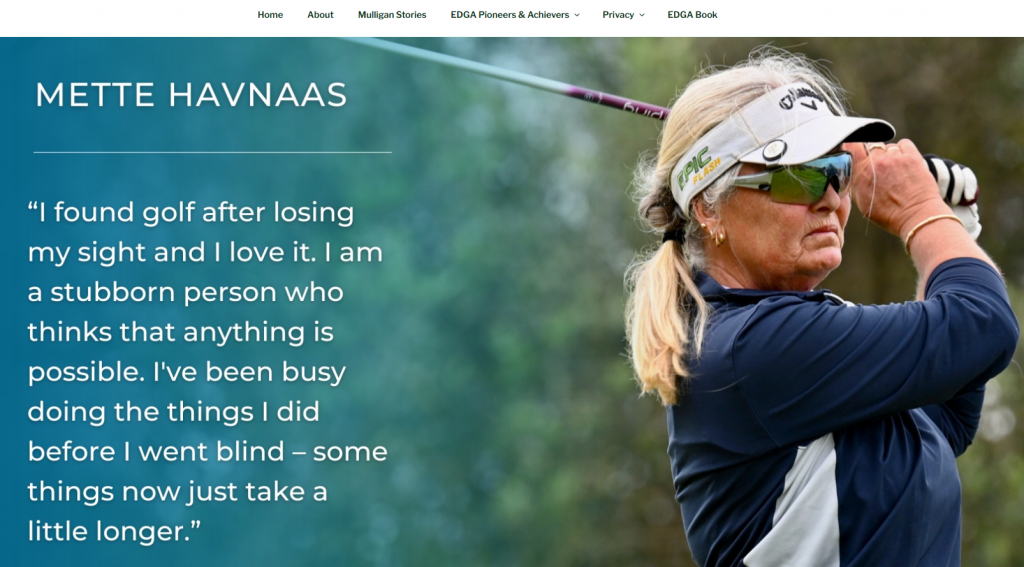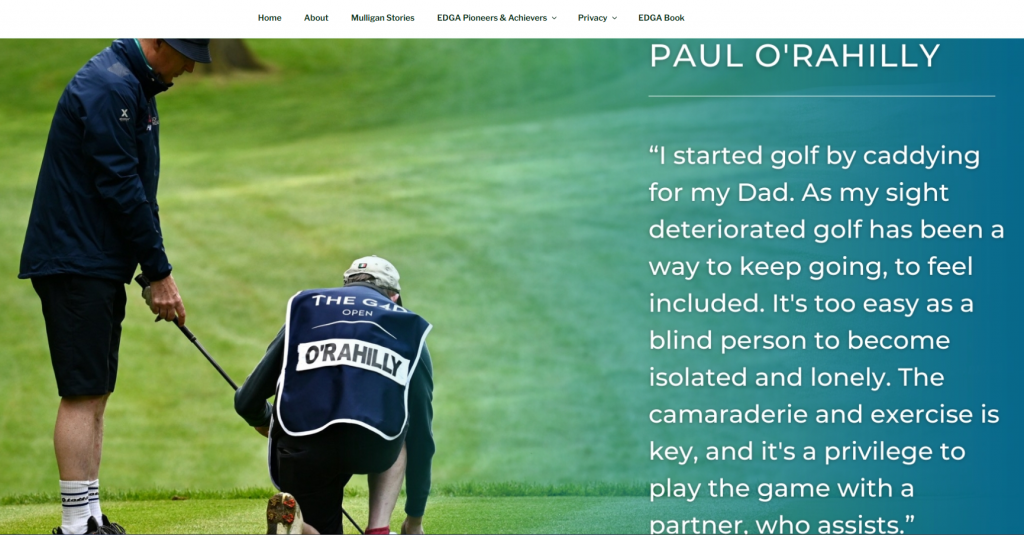
Visual impairment is a term used to describe any kind of vision loss. Visual impairments can range from partial vision loss to total blindness. The timing of the onset of vision loss may impact how an individual conceptualizes the world. If early vision loss limited their movement experiences, motor skill development may be delayed. This poor motor development may be the result of “lack of doing” and not due to the visual impairment itself.
When coaching people with visual impairments, remember the following:
- Use the person’s name to gain attention.
- Engage a family member or friend to help within the initial coaching sessions.
- Enquire when the player lost their sight. There is a significant difference between a player who lost sight and a player born without sight. Understanding this will influence how you explain the game and the different environments, equipment, and techniques. Imagine if you had never seen a golf club before; how would you want the club described to you?
- Explain and let the player physically explore the equipment, the golf ball, tee, club components, the surface they are playing from, including different grasses. The first lesson may involve helping the student familiarise themselves with the environment and equipment. Plan for longer or more frequent sessions as coaching golf to blind and visually impaired participants will require more time.

- Demonstration is not always possible, depending on the degree of sight loss. Remember, blind golfers ‘see’ with their ears and their hands.
- Allow your student to feel/touch your golf position, shoulders, back, hands, arms, legs, and feet if they wish. This is how a blind golfer will conceptualise and visualise what you are coaching them to do so they can recreate the exact exercise/positioning for themselves.
- Ask the player to ‘feel’ the golf swing motions through their feet and hands and give you feedback on this sensation.
- Ask the player to provide feedback on the pressure movement between the lead and trail leg and the changes in pressure at set-up, impact and end position or finish of the swing.
- Ask the player to identify speed changes in the swing and how these sound?

- Ask the player to provide feedback on where the club is making contact with the ground. Support this with verbal confirmation and feedback.
- Ask if the pressure applied to the handle varies within the swing. Does the player feel changes in their active grip pressure during different motions of the swing, for example, in the set-up, the backswing, the forward swing, or the finish position?
- Use your voice for directional orientation and pace out distances with the player to identify distance control.
- Ask the player to roll a ball by hand to different distances and provide feedback on the outcome.
- Provide continual verbal feedback describing the shot, direction, distance, and elevation. Request feedback from the golfer; for example, on which part of the clubface did they make contact? Do they have an indication from their feel/hearing on the direction or distance the ball travelled?
- Reference external focus: what the clubhead is doing and their interaction with the handle or the ground, for example.
- Use clear, accurate verbal instructions and check for understanding again prioritising regular feedback.
- Make sure the participant knows when you have finished and are moving away from them.

- Keep the area where you work free of obstacles, background noise, and clutter.
- Supply any necessary information in a suitable format such as audio recording, large print or braille copy.
- Agree a method of communication (specific words or gestures) that works for you and the person with the visual impairment, and continually review this rapport as necessary.

- The video below shows the communication between the player and the guide in generating essential feedback so that the player can conceptualise his environment.
Player Stories
Gain further insights to how blind and visually impaired golfers play via the EDGA Player Stories – Click on the following Player Stories to read and listen to EDGA Player Stories.





Further Player Stories can be found via clicking on the image link below:

*This material remains the intellectual property of the EDGA development team and may not be distributed or used further without written consent from the EDGA development team.
